At 5 am on Friday, Nov 25, 2011, Danny, Jia Sheng and I set off for a three day, two night trip to Parit Jawa and the surrounding rice paddies.
It must have been the early hour because we sailed right past the exit at Ayer Hitam, so a change of plans was in order and we headed to Batu Gajah first. Arriving at about quarter to eight, the idea was to look for rare waders, Ruff having been seen there several years ago. Most years the rice fields are stubble at this time of year, but this year the main rice field was showing a couple of months of new growth.
While scenic this limited our visibility. Jia Sheng did his best to turn the numerous wood sandpipers into Ruff, but the birds just wouldn’t cooperate. After a quick run through the central rice field we drove over the small bridge to the area the purple swamphens normally are seen. Sure enough they were there, as well as common moorhens, the water buffalo, cattle egrets but no whistling ducks! The water level was very high, just under the bridge, at least a meter higher than I’ve ever seen before. Seems the flood water from Thailand must be coming down here.
Then we meandered through the numerous rice paddies nearby. In several fields the rice was either much shorter or hadn’t been planted so visibility was much better. But the birds weren’t. We did pick up some more species, pacific golden plover, little ringed plover, long toed stint. Cinnamon bitterns were plentiful, and we did get a pied harrier which is not common at Batu Gajah. But despite several sweeps through the rice paddies it was clear we weren’t going to find anything out of the ordinary so we headed to Parit Jawa at eleven.
Parit Jawa for those who don’t know is a busy fishing village, with lots of seafood restaurants, and is very popular with locals coming from Muar and all points for a delicious and reasonably priced meal. Needless to say, we had a great lunch. After lunch we headed over to the pier and scanned the mudflats for activity. When the tide is out, the mudflats extend for perhaps a kilometer out to sea !
There was plenty of activity on the mudflats. Hundreds of mudskippers chasing each other around, dozens of terek sandpipers, redshanks, lesser sand plovers and of course the resident lesser adjutant colony. After about ten minutes I noticed some pretty big waders, in fact one of the world’s largest waders, the eurasian curlew. Altogether we found four eurasian curlews. Though not uncommon in Malaysia they are quite rare in Singapore so this was surely the star bird of Parit Jawa.
Around 2 pm it started to rain so we beat a retreat to our small hotel, venturing out again around 4 pm when it looked like the weather would clear. We went to Sungei Balang for a late afternoon recce, but had to wait out another heavy shower. Finally we got about on hour of bird watching in, seeing many of the expected birds, but not many raptors. That would have to wait for the next day.
We were up early on Saturday, here’s what the harbor looks like at 6:30 am. But the fishermen have been working all hours, some go out at night, it depends on what they are fishing for.
We reached Sungei Balang about 7:30 am. The morning light was great! A pleasant surprise, they have upgraded several of the tracks with fresh gravel so there is less chance of getting stuck.
One of our first birds was those ever-so-hard to identify snipes, at some distance but in the open. We would flush lots of snipes over the course of the day. Then an entertaining oriental reed warbler in nice light, but hiding in the grass. Then a black kite gave us a close flyby in good light. I headed down the track to the coconut palm which in prior years had been a favorite roost for the greater spotted eagle. And, surprise, surprise, the bird was there again this year and flushed as we approached.
And it wasn’t even 8 o’clock yet! The bird we flushed was an adult greater spotted eagle, my first time seeing the adult. It seems Sungei Balang usually gets juvenile eagles. Continuing our eagle hunt around 8:30 we flushed a juvenile greater spotted eagle with very different looking plumage. IUCN vulnerable, it was great to see these big eagles again.
The early morning light can even make the ugly lesser adjutant look it’s best. This species is IUCN vulnerable, but seems to be doing fairly well in Parit Jawa and Sungei Balang, we saw at least a couple dozen birds. Fortunately the farmers are quite bird friendly and don’t try to chase this or other species out of their paddy fields.
Working the rice fields is really hard and hot work, here is a small machine tilling the ground in preparation for planting. There were also a couple of more modern tractors in operation. Unlike Batu Gajah, the fields have not yet been planted, so visibility for bird watching is still good. Of course the egrets and ever present javan mynas love following the tractors, searching for easy meals.
Around the fields, the farmers have erected a number of owl nest boxes, to attract barn owls who would feed on the mice and rats.
In one of these nest boxes, we noticed a couple of youngsters peering out. They were quite shy though, after a brief look they would retreat into the dark recesses.
The raptor that puts on the best show is the harrier who swoops low over the fields in search of prey. But they weren’t close or numerous, with perhaps just two harriers in all of Sungei Balang. Finally just before noon a juvenile pied harrier allowed reasonably close views.
After this, we left for lunch; and had another long rain break as we waited for the daily afternoon downpour to subside. Returning to Sungei Balang in the late afternoon, the raptors were mostly done for the day and activity was winding down. There were lots of local fishermen plying the canals, but paradoxically there was a no fishing sign, and in English, which seemed odd. But with all the fertilizers and pesticides sprayed on the fields, you’d think no fishing would be sensible.
That evening after dinner, Danny talked to one of the boat owners to arrange him to take us out the following morning. But then on Sunday morning, the fellow wasn’t anywhere to be seen; and finally reached by phone said he wouldn’t be able to take us: “no boat” he said. So I guess if he is reading this he’ll know we won’t be contacting him next time! Instead we looked around the small harbor, plenty of boats!
After a lot of jawboning to the chaps who frequent the benches near the pier, Danny finally found a fellow who, after a cup of coffee, agreed to take us out. We didn’t get underway until 9 am, later than we’d really want to be starting on a pelagic, but what to do. So out we went having no idea at all what to expect, other than what the fisherman had told us which is that there were no birds.
And they were mostly right, there weren’t many birds. We were getting out into the shipping lanes, there was a barge loaded with sand, headed to Singapore? And then we saw a group of a dozen or so animals that definitely weren’t birds around 10 am. We stayed with this pod of Indo-pacific Bottlenose Dolphins for about ten minutes, before letting them swim off into the distance. It’s always a thrill to see these magnificent mammals.
About thirty minutes later we came across the first of two unmistakable Aleutian Terns perched on driftwood. An hour after that we came across a second, this one a bit closer. There could have been a few more flying about, but I didn’t get any of those in flight. So it’s interesting to note that Aleutian Terns can be found in the Straits of Malacca at this time of year. More trips would be needed to find any trends. Interestingly, Jia Sheng reported seeing a distant all dark storm petrel, most likely swinhoe’s, but he was the only observer to see this bird. The Straits of Malacca should be very interesting during migration!
Just after twelve, we approached a pair of birds on driftwood, but these turned out to be common terns which in this region are not very common and can be confused with Aleutian terns unless you can observe the features closely.
By now, we were almost back in port, reaching the harbor about 12:30. In a short three hour pelagic we had seen about as many target species as we might have on a much longer trip in the Straits of Singapore. And, there was no irritatingly long wait for an immigration check point. The typical Malacca style fishing boats are no match in comfort with a Grand Banks, I think a long trip would get uncomfortable. We had to sit on the engine housing which was a hot seat! About the most you can fit is four bird watchers, along with a crew of two. Here’s a typical boat at work.
Though not built for comfort, the boat was no slouch for speed. We were cruising at 17 km/h versus about 20 km/h for the Grand Banks. I guess the fishermen need the speed as they often fish way out in the straits. Interestingly Parit Jawa is one of the narrowest crossings in the Straits of Malacca, just 45 km to Sumatra, versus 37 km at Tanjung Tuan, famous for the spring raptor migration. The boatman took us almost half way across the straits, well out into the shipping lanes, but even here the fishermen were casting their nets. We didn’t see any buoys out in the straits, so no convenient perch for terns. I took five GPS points but either do to a bug or human error only the second of the Aleutian tern spots got saved, yet the journey looked something like this.
And lastly here is the happy crew, sans photographer. After docking we headed over to the sea food restaurants for one last sumptuous meal, and then to a car wash for a very dirty vehicle and our drive back to Singapore.


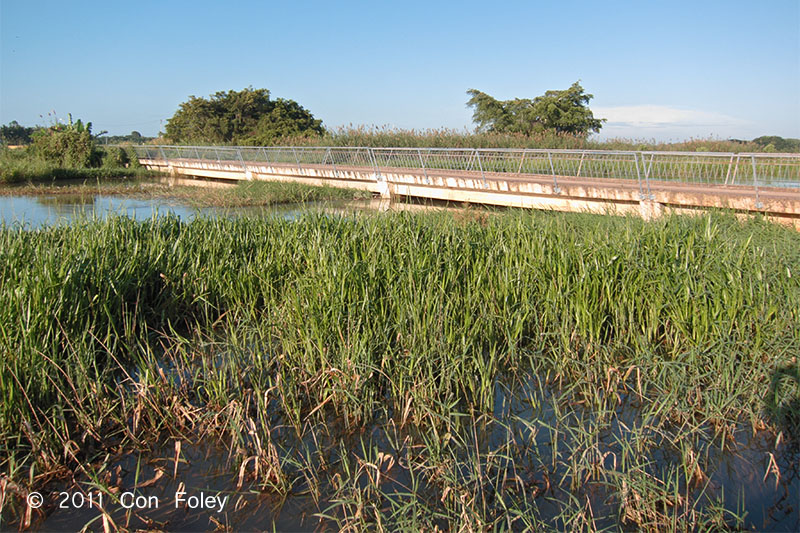
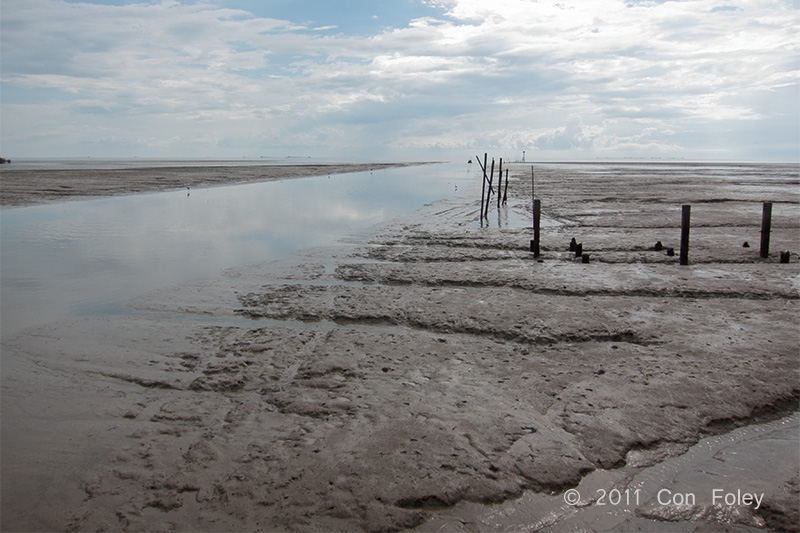


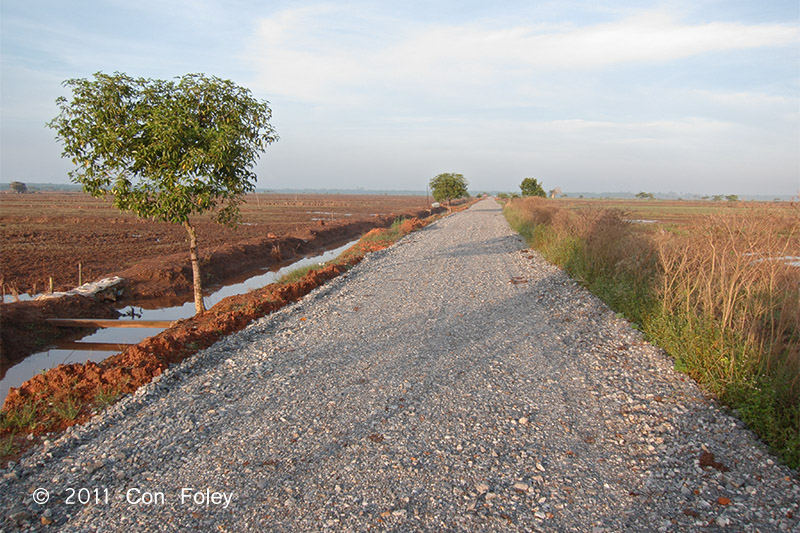
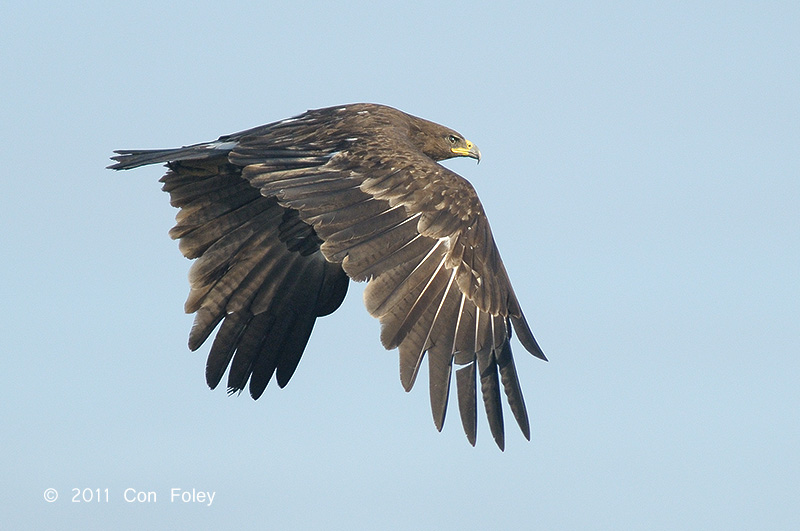
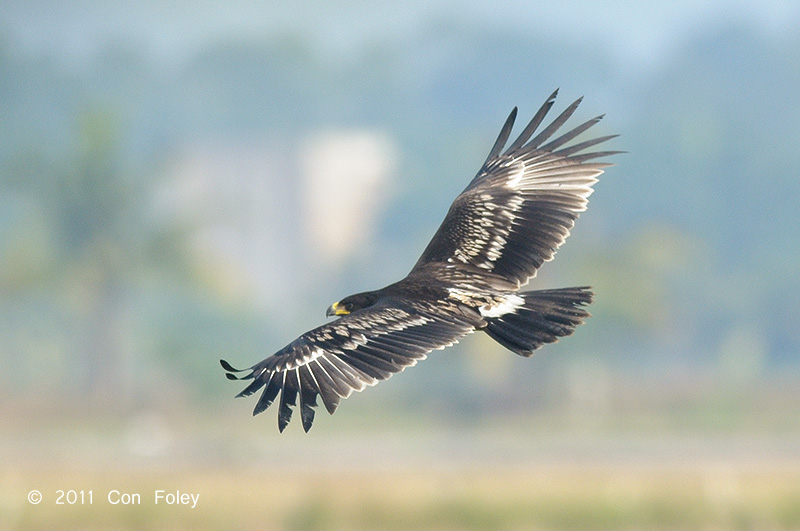

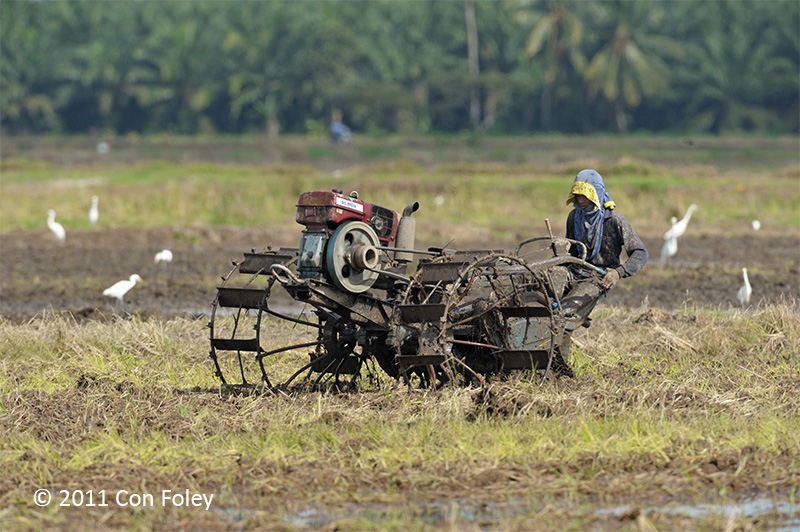
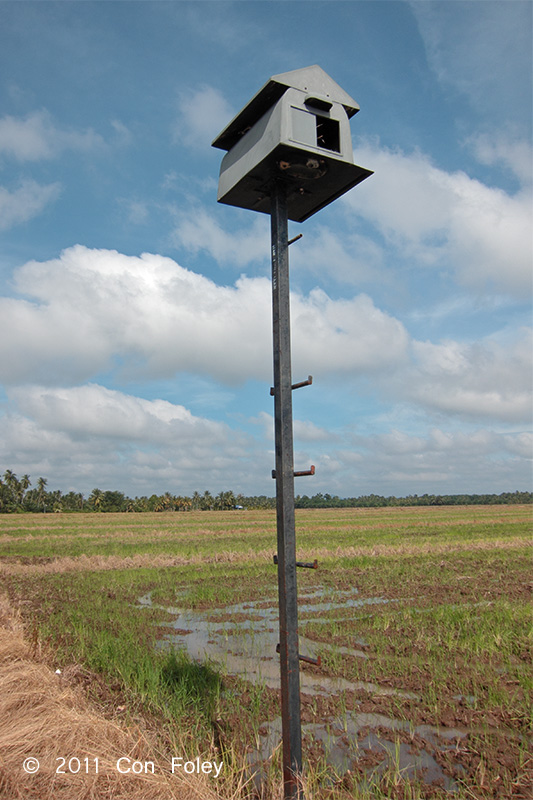
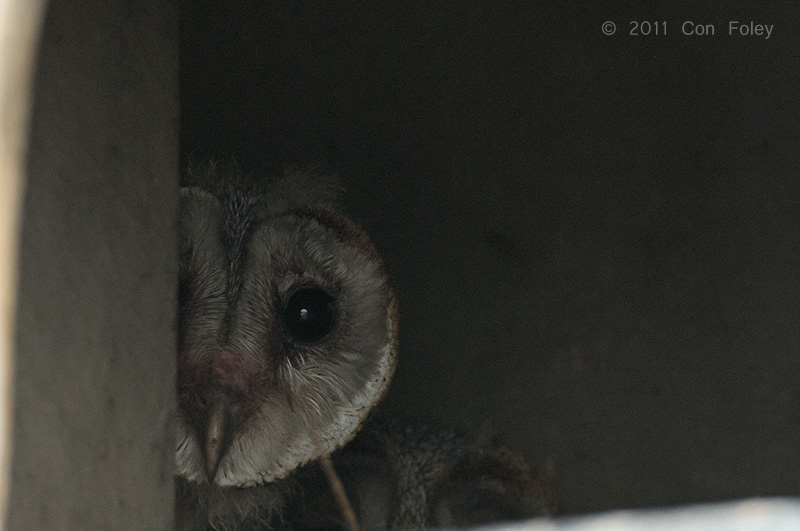
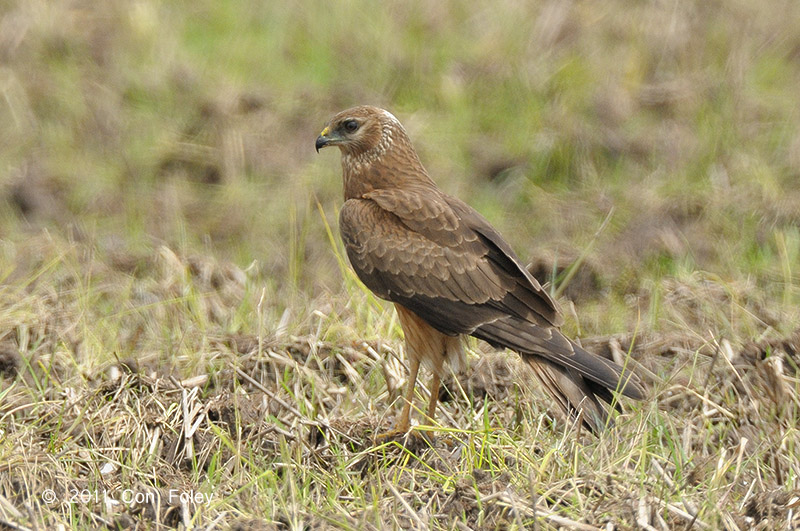
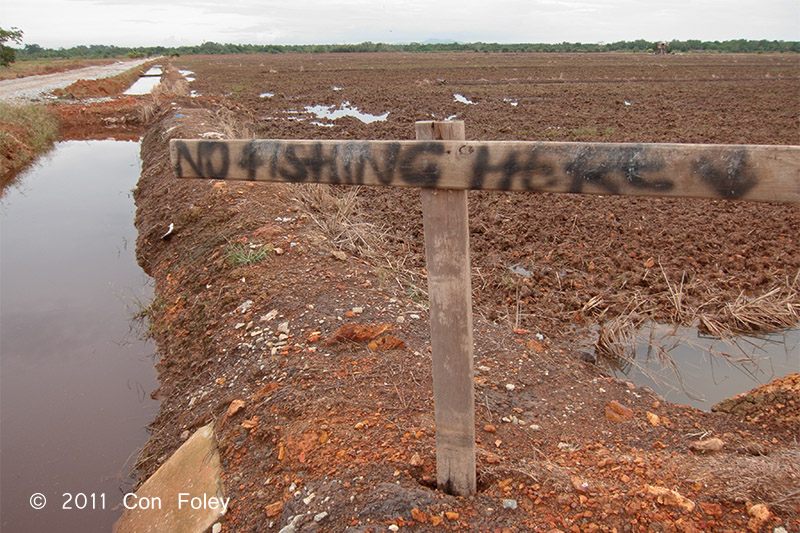



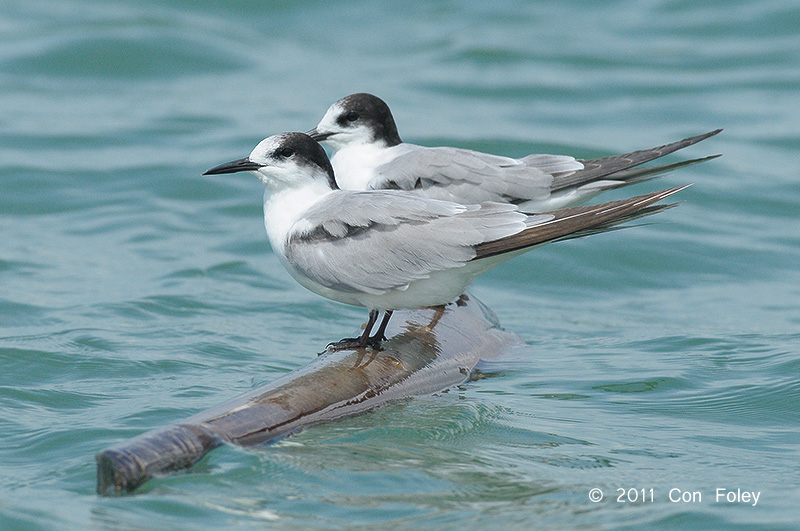
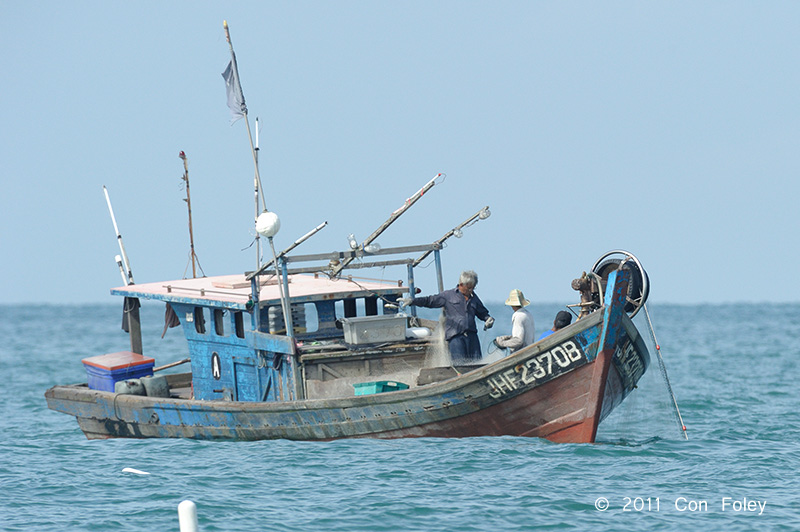

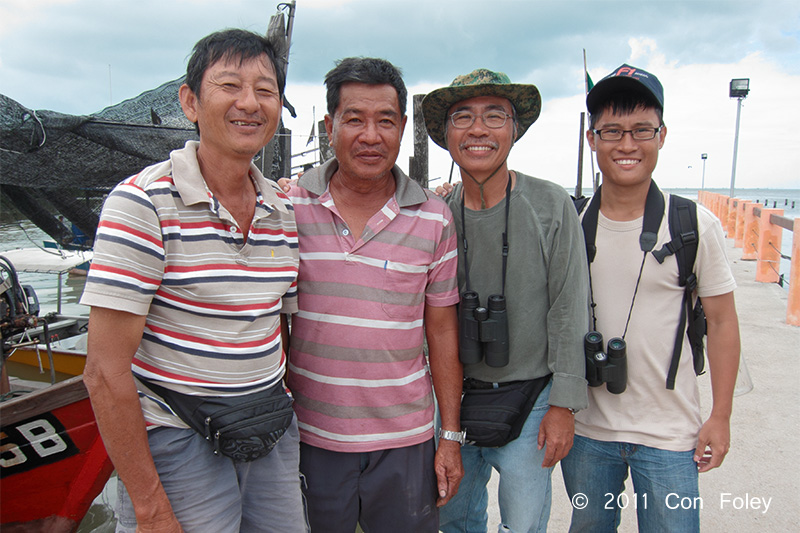
Hi Con,
Very interesting and impressive trip. Nice write up and I enjoyed the reading of your blog a lot.
Keep it coming!
David
Great write-up and photos, Con. I really enjoyed the read. Baling and Parit Jawa are both very enjoyable spots, but I have an offshore trip to look forward to!